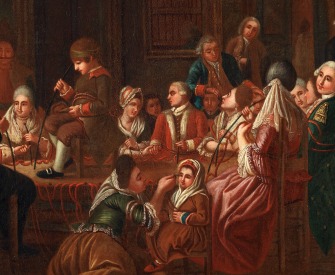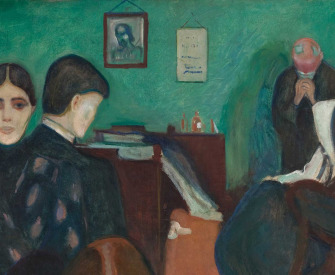Whoever wants to determine whether someone has leprosy should first make him sing: if his voice is harsh, it may be a sign of leprosy, but if it is clear, it is a good sign. (Proceed as follows: take a tablet and write the good signs on one side and the bad signs on the other, and you will not become confused.)
It is also possible to recognize lepers by examining the different members. First, lepers have thin, fine hairs that thicken at the roots; moreover, their hairs are pale and gray. This is due to the fact that the material from which the hairs are formed is lacking and cannot be exhaled through the pores, and because the pores are almost closed. It is advisable to examine the hairs in sunlight to see if they are thin and straight, like a pig’s bristles.
They are also recognized by the skin of the head, which is lumpy, so that one area is higher than the next; and by the lack of hair on the eyebrows, since lepers have no hair there, particularly at the corners. Their brows have a curvature, seeming almost round and spherical. They are recognized, too, by the roundness of the eyeballs, which seem to be starting from their sockets, so that a leper’s face is horrible to see—its natural expression being distorted, it is a terrible sight.
Having done these things, you must examine the patient completely naked to see whether his skin is darkened and to see if its surface feels rough with a certain smoothness at the same time—if so, it is a sign of leprosy. Then sprinkle cold water on the shoulders; if it is not retained, it is a sign of leprosy. The reason is that the oiliness of the skin is weakened by the excess heat beneath the skin, and the water will not stay on this oiliness; and so it is a sign.
Or make the patient cover his eyes so that he cannot see, and say, “Look out, I’m going to prick you!” and do not prick him. Then say, “I pricked you on the foot,” and if he agrees, it is a sign of leprosy.
Jordan of Turre, from “The Symptoms of Lepers.” The master of medicine at the University of Montpellier drew upon sources both Arabic and European for his description of the disease. The affliction retained its biblical connotation as a mark of divine justice throughout the Middle Ages.
Back to Issue




